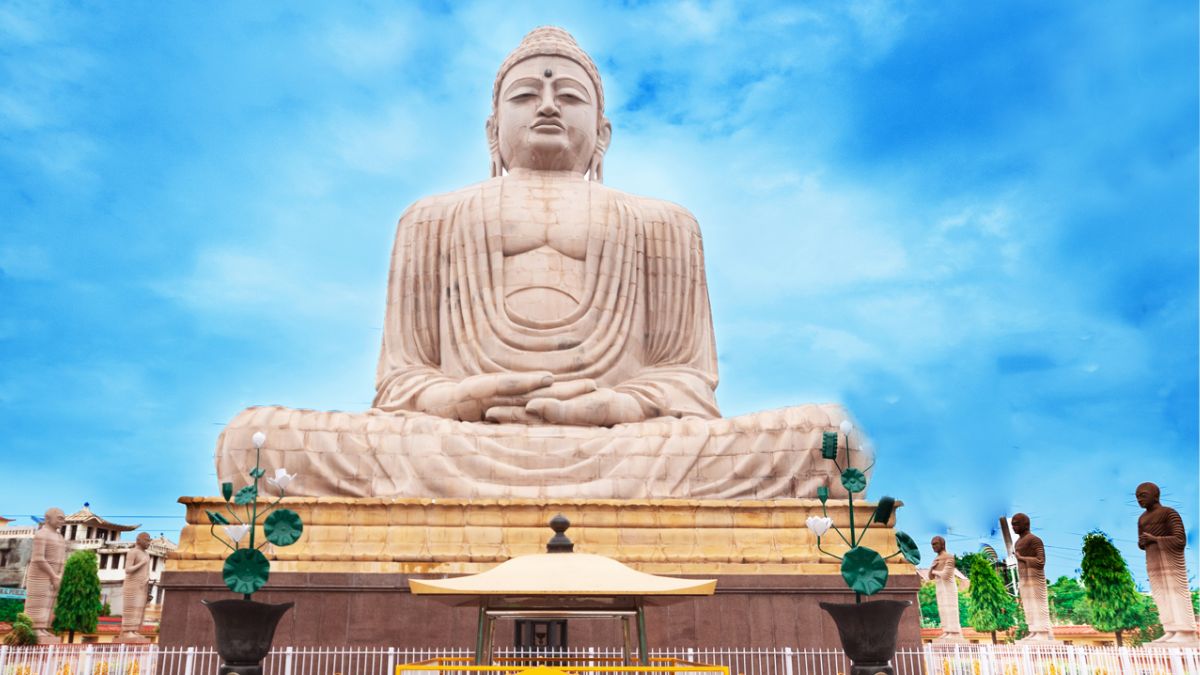Bihar, a state in eastern India, is one of the oldest inhabited regions in the world, with a history spanning over 3,000 years. The state’s rich culture and heritage are evident from the numerous ancient monuments found across Bihar. With many tourist attractions, Bihar draws large numbers of visitors from around the globe every year, who come to experience its long and storied past. Despite its antiquity, Bihar remains an important cultural hub, offering tourists a window into India’s ancient civilizations through its preserved historical sites and landmarks.
Best time to visit: The winter months from November to mid-March are the most ideal time to visit Bihar. With mild temperatures ranging from 4°C to 10°C and bright sunny days, the winter season in Bihar is quite pleasant. Since the winters are not too severe, many festivals and celebrations take place during this period, making it an enjoyable time to plan a trip to the state.
Here are the top places to visit on your next trip to Bihar:
Bodh Gaya
Patna
Originally named Pataliputra, Patna is now a centre of political activity. The older part of the city is called Bankipur, while the newer areas have wide roads and modern buildings. Patna showcases Bihar’s rich cultural heritage through its many monuments like the Patna Sahib Gurudwara, Patna Planetarium, the High Court, Golghar, Secretariat Building, Padri ki Haveli and numerous other attractions.
Despite its ancient roots, Patna maintains an identity as a quintessential modern North Indian city.
Nalanda
Nalanda was once home to one of the oldest and most prestigious Buddhist universities and monasteries of ancient times. Today, this spiritual city remains an enriching destination, offering glimpses into its vibrant history, culture, architecture and tourism.
While the ancient university complex lies in ruins now, it continues to attract visitors with its monasteries to the east, temples to the west, and a small museum housing Buddhist and Hindu artefacts like stupas, bronzes, coins, pottery and remnants of burnt rice.
Nalanda is considered a cradle of religions – important not just for Buddhism but also Jainism, Hinduism and Sufism. Given its rich heritage and historical significance, Nalanda remains a popular tourist attraction where people can experience spirituality alongside the remnants of its glorious past.
Vaishali
For Buddhists, Vaishali is revered as the place where Lord Buddha delivered his last sermon before attaining Nirvana. To commemorate this event, Emperor Ashoka erected one of his famous pillars here after embracing Buddhism.
Surrounded by mango and banana groves and rice fields, this historical village attracts religious pilgrims and tourists all year round. With its links to the Buddha’s life and as Mahavira’s birthplace, Vaishali is an important sacred site for both Buddhists and Jains respectively.
Madhubani
Madhubani is an ancient city in Bihar famous for its rich art and cultural heritage, especially the world-renowned Madhubani paintings that originated here. Mentioned in the Ramayana epic, this small district emerged as a separate entity from Darbhanga in 1972.
Slowly gaining popularity as a tourist destination for art enthusiasts, Madhubani is surrounded by the districts of Darbhanga to the south, Sitamarhi and Supaul on either side and borders Nepal to the north. It is also an important commercial town in the region.
While the vibrant Madhubani paintings are the prime attraction, the city has several temples that draw local devotees. With its artistic legacy, ancient roots and cultural significance, Madhubani offers visitors a glimpse into Bihar’s traditional art forms and heritage.
Muzaffarpur
The city gets its name from a revenue officer called Muzaffar Khan. While the local language is Vajjika, Hindi is used for official purposes. Located 75 km north of Patna, Muzaffarpur is the fourth most populous city in Bihar.
It is particularly famous for its Shahi litchis. The region has cultural influences from Hinduism, Islam and Nepali traditions. The local cuisine combines Bihari and North Indian flavors, with popular dishes like kadhi bari, ghugni, choora, dhuska, litti and pittha.
With its rivers, litchi production, mixed cultural heritage and cuisine, Muzaffarpur represents the diversity of Bihar while serving as one of its major urban centres.
Bhagalpur
Bhagalpur serves as a major educational hub as well as an important commercial and political centre. It is home to the Vikramshila Gangetic Dolphin Sanctuary, which protects the Gangetic dolphin – India’s national aquatic animal.
With roots steeped in various mythologies, Bhagalpur’s history is a fascinating blend of legends waiting to be explored.
Situated around 250 km east of Patna, the state capital, the commonly spoken languages are Angika and Hindi. As a fast-developing city, Bhagalpur is on course to become one of Bihar’s smart cities.
Combining its silk heritage, mythological past, environmental initiatives and modern growth, Bhagalpur represents the diverse facets of Bihar.
With its rich history, diverse culture, and a plethora of attractions, Bihar stands as a testament to India’s enduring heritage. Whether exploring ancient ruins or admiring vibrant art forms, visitors to Bihar are sure to be captivated by its timeless charm and profound significance in India’s cultural tapestry.


